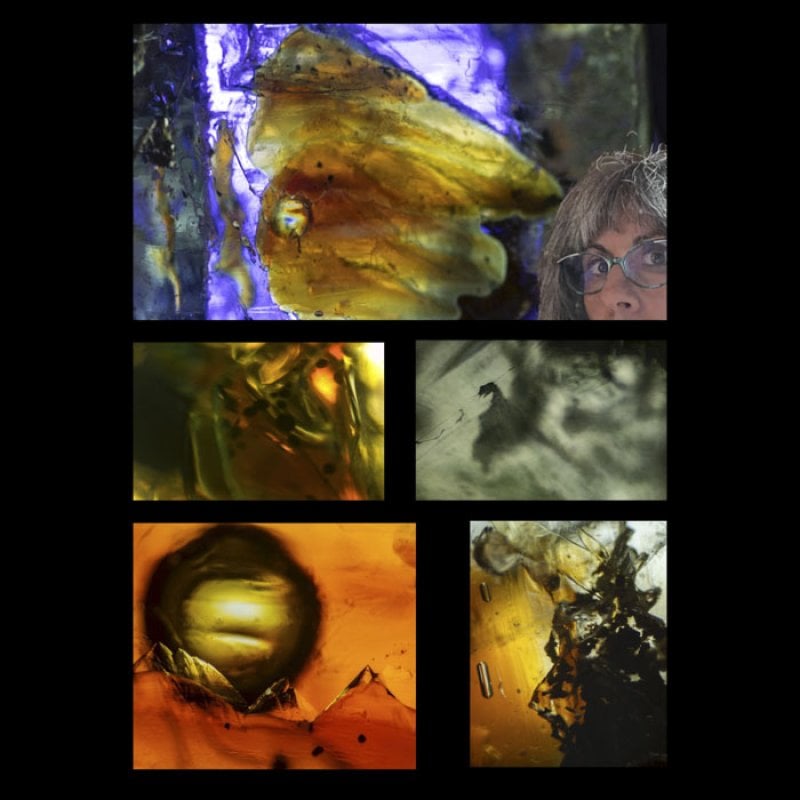Karen Marie Aneiro
About the researcher
Hi, I’m Karen Aneiro, a PhD researcher in Enviro/Photo at the Institute of Photography (since autumn 2024). I received my MA Photography degree at Falmouth (2023). I am first and foremost an artist—always have been. Photography and sculpture are intuitive to me, and for years I created commissioned art and entered juried shows. My work is represented in galleries, private collections and permanent museum exhibits. But, being married to a marine scientist/environmental chemist whose research concentrates on pollution, evolved my focus. I read peer-reviewed journal articles and discuss my partner’s microplastic research, occasionally co-authoring with him, so I understand the issue’s seriousness. But for people who are not regular journal readers, academic scientific writing can be difficult and unavailable (without subscription). Can art/science collaborations successfully introduce scientific research to others? During my MA Photography studies, I began testing the question, creating series’ that visually narrated microplastic pollution issues. I took my photographs and sculptures into college classrooms and to public venues. Interested people responded to my work’s emotional tension. They were attracted to beautiful art, only to find out they were looking at horrific pollution. Visual persuasion is indeed powerful. I’m now describing microplastics, I named Anthropogenic Spectres, in a Gothic story. It is my hope that once people know about microplastic pollution, they will adopt plastic-reduced lifestyles that will lessen health risks.
My partner and I live at EquiSea Farms (meaning seahorse) in Virginia, US. Friesian horses, Arabian horses, llamas, dogs, cats and green wing macaws make up our non-human family. Many are rescues. All have forever homes with us. In summary I am an animal and nature-loving, landlocked mermaid artist dreaming of a future where I can SCUBA dive under microplastic-free waves—
Research interests
Photography, Microplastic Pollution, Ecocriticism, Museums, Creating Museum Exhibit Art, Climate/Environmental/Global Pollution Issues, Gothic Writing, Storytelling, The Great Acceleration/The Anthropocene, Eco-Sculpting, Visual Persuasion, Art-based Research, Practice-based Research, Collaborations, Environmental Science, Education, Sustainable Photography Practices.

PhD abstract
Thesis title
Microscopic Gothic: Harnessing Visual Stories to Reveal Anthropogenic Spectres
Abstract
Plastics, born of fossil fuels, pollute during production, use and discard. Many contain dangerous chemicals. While plastic pollution concerns grow, industries are exponentially increasing production. Resulting debris disperse by air and water to all reaches of the planet. Our extensive use of plastics indoors, and their fragmentation therein, make humans the most exposed species on the planet.
My research project photographically exposes the dilemma through a Gothic narrative, illustrating plastics’ fossil fuel origins deep within primeval ocean sediments, from extraction, plastic-product production/human use, discard and eventual disintegration into microplastics.
Using an Arts-Based Research Practice, leveraging my museum education master’s, MA Photography experiences, and impactful methods I am generating thought-provoking artwork to encourage classroom/museum/online learning/interactions, and activism.
Photographing microplastics through microscopes/macro-lenses reveals overlooked pollution. Magnified subjects exhibit macabre appearances—Anthropogenic Spectres outliving their intended use, orphaned, disintegrating smaller…infiltrating living beings and ecosystems.
I coined “Microplastic Gothic” because gothic description chronicles environmental-anxieties’ dark secrets—fear, chaos—eerie hauntings therein. Ghost stories attract us. Therefore, audiences are primed for my visual story which will join the ecocriticism/ecohorror/eco-gothic-art movements describing global pollution. Pandemics, climatic disruptions, wildfires, pollution… transported gothic beyond fiction—Anthropogenic Spectres are real.
Research Question: How might photographically exposing the microplastic pollution dilemma through a Gothic-themed, visually persuasive narrative inform public perceptions about plastic pollution, thus encouraging behaviour change?
Aims:
- Create a Gothic-themed/photographic story revealing an urgent message about microplastic pollution that encourages viewers to examine their relationship with plastics, while inspiring hope, environmental empathy and connection across generations into the future.
- Utilize scientific collaboration, ensuring accuracy.
- Employ ethically-designed workshops and feedback sessions to assess my research question.
- Contribute original findings in peer-reviewed articles.
Objectives:
- Represent microplastics as Anthropogenic Spectres.
- Disseminate work in galleries/websites/meetings/book.
- Foster contemplation of our plastic-dependent lifestyles.
- Activate political engagement, stemming plastic production/fossil fuel use.
Qualifications
|
Year |
Qualification |
Awarding body |
|---|---|---|
|
2023 |
MA Photography |
Falmouth University |
|
1997 |
MAEd Museum Education |
William & Mary, Williamsburg, Virginia US |
|
1992
|
BA Fine Art
|
Virginia Wesleyan University, Virginia Beach, Virginia US |
|
1991 |
AA Fine Art |
Tidewater Community College, Virginia Beach, Virginia US |
|
2021 |
AAS Photography |
Thomas Nelson Community College, Hampton, Virginia US |
|
1989 |
SSI Certification: Advanced Open Water SCUBA Instructor |
Lynnhaven Dive Center, Virginia Beach, Virginia US |
Areas of expertise
Photography, Creating Eco-Gothic Art, Research, Visual storytelling, Microplastic photography, Sculpture, Museum Education, Museum Exhibit Artist, Public Speaking, Writing, Artist/Scientist Collaborations, Equine Sculptor/photographer/equestrian.